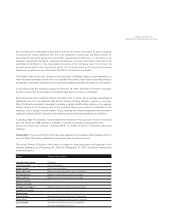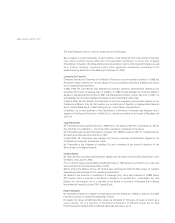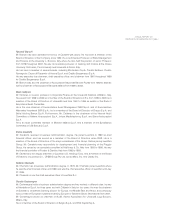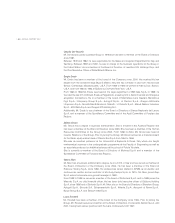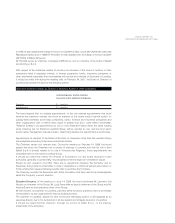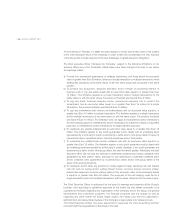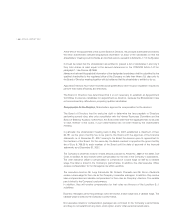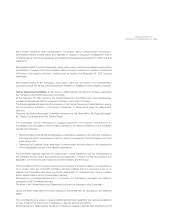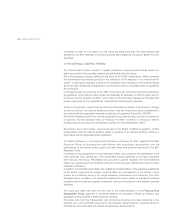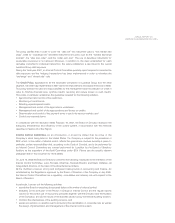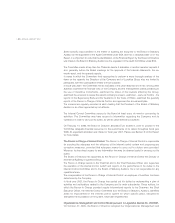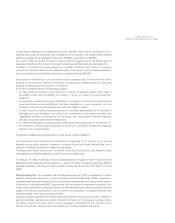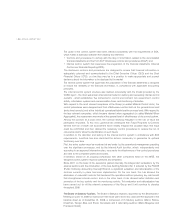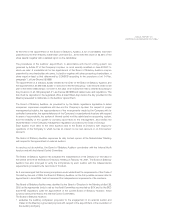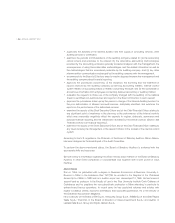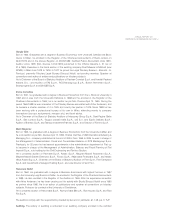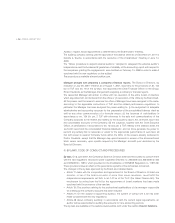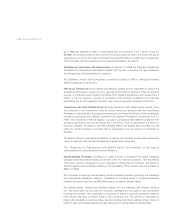LensCrafters 2007 Annual Report Download - page 92
Download and view the complete annual report
Please find page 92 of the 2007 LensCrafters annual report below. You can navigate through the pages in the report by either clicking on the pages listed below, or by using the keyword search tool below to find specific information within the annual report.ANNUAL REPORT ON
CORPORATE GOVERNANCE 2007 | 91 <
The policy clarifies that in order to cover the “rate risk” the instrument used is “the interest rate
swap”, while for “exchange risk” derivative instruments are used, such as the “forward exchange
contract”, the “stop loss order”, and the “collar zero cost”. The use of derivative instruments for
speculative purposes is not allowed. Moreover, in addition to the caps established for each
derivative instrument’s individual transaction, the policy establishes a cap linked to the overall
Luxottica Group debt exposure.
During the fiscal year 2007, an Internal Control Committee quarterly report required to describe the
debt exposure and the hedging transactions has been implemented in order to minimize the
“exchange” and “interest rate” risks.
The Credit Policy, applicable to all the wholesale companies of Luxottica Group and the retail
segment, has been fully implemented in 2007 due to the improvements introduced at the end of 2006.
This policy defines the rules and responsibilities for the management and the collection of credit in
order to minimize financial risks, optimize credits’ revolving and reduce losses on such credits.
This policy, in particular, establishes the guidelines required for the following activities:
• Apportionment and control of the credit lines;
• Monitoring of credit trends;
• Soliciting unpaid/expired credits;
• Management and control of the legal actions undertaken;
• Management and control of the appropriations and losses on credits;
• Determination and control of the payment terms in use in the various markets; and
• Control over warranty terms.
In compliance with the resolution dated February 19, 2007, the Board of Directors assesses the
adequacy, effectiveness and efficiency of the control system, in accordance with the methods
described in Section III of this Report.
Internal Control Committee. As an introduction, it should be stated that, by virtue of the
Company’s stock being listed in the United States, the Company is subject to the provisions of
SOX, which, in the matter of internal control, affects the governance structure currently in place. In
particular, certain responsibilities that, according to the Code of Conduct, are to be performed by
an Internal Control Committee are instead performed for Luxottica by the Board of Statutory
Auditors as the equivalent of the Audit Committee under SOX. Please see the specific relevant
paragraph later in this document for more details.
On June 14, 2006 the Board of Directors confirmed the following individuals as the members of the
Internal Control Committee: Lucio Rondelli, Chairman; Tancredi Bianchi; and Mario Cattaneo, all
independent directors on the basis of the aforementioned criteria.
All the members possess strong and competent backgrounds in accounting and finance. As
established by the Regulations approved by the Board of Directors of the Company in July 2005,
the Internal Control Committee has a regulatory, consultative and advisory role with respect to the
Board of Directors.
In particular, it carries out the following activities:
• assists the Board in executing its assigned duties in the matter of internal control;
• evaluates (i) the work plan of the Person in Charge of Internal Control and the regular reports
issued; (ii) the correct use of accounting principles together with the Directors and the Auditors
of the Company; and (iii) the results of the activities carried out by the Internal Auditing function;
• monitors the effectiveness of the auditing process; and
• expresses opinions on specific events concerning the identification of corporate risks as well as
the design, implementation and management of the internal control system.


